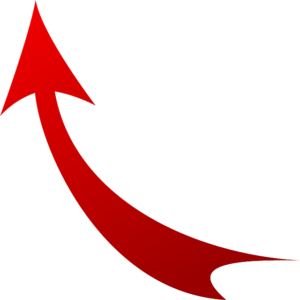16-Point Landing Page Checklist for Nonprofits
How to Create a High-Converting Call to Action Page that Grows Your Email List, Wins More Donors, or Mobilizes Social Action

Image by TeroVesalainen from Pixabay
Too many nonprofits are not fully utilizing the potential of their websites. They often set up their sites from a “come here and look at our site” perspective, rather than building it in such a way that it attracts people – the right people – who are motivated to take actions that further your mission.
That should be a primary goal of every nonprofit’s site.
Integral to that goal is the effective use of landing pages. And to create the most optimized, highest converting landing pages, use this 16-point landing page checklist to make sure these critical pages are doing everything they can to meet your goals.
What Is a Landing Page for Nonprofits?
A landing page is a page specifically designed to capture a particular audience segment and motivate them to take a particular action.
You have encountered these on other sites many times, perhaps even without realizing it.
Here’s an example of a nonprofit’s landing page that hits many (though not all) of the 16 points you’re about to go through.
It doesn’t do everything right, but it does quite a few good things and has performed well for the small nonprofit using it. Please open it up in a new tab so you can refer to it as you go through the checklist below.
16 Point Landing Page Checklist
This landing page checklist comes courtesy of Digital Marketer, an online marketing training company.
If you’re frustrated that your website isn’t producing like you wish it would, this resource is one of the most valuable free tools you will find … anywhere. Let’s get to it. Here’s what every fully optimized landing page will do.
1. Call Out Your Target Market

Image by Gerd Altmann from Pixabay
You aren’t reaching out to everyone. You’re reaching out to a particular type of person. A segment of people. Most likely, these are people who care about your mission, and who already possess some motivation to help.
In your imagery and your headlines, those people should see themselves. By specifying who this page is for, you’re reassuring visitors they are in the right place. On the Babysteps landing page example you were asked to open in a separate tab, they call out their market using phrases like ‘escaped the streets’ and ‘true homeless story.’
For people motivated to help people who are homeless, those phrases will appeal to them.
2. Have a Single Clear and Concise Purpose
The landing page is not the place to link to other pages on your site or external sites. In blogs, you should do those things. But a landing page has a singular purpose.
The landing page example’s purpose is to get people to request the eBook and sign up for their email list. Nothing else. All the content on the page is built around that purpose. Even though it’s free, this page is ‘selling’ the eBook.
With this approach, you can more effectively advertise your landing page elsewhere online, or even in printed materials.
3. Make It Easy to Understand
Visitors must understand what your page is about in less than five seconds. Basically, this means your headline and subheadings, and any imagery, must immediately speak to the purpose of your landing page.
This is best done using a verb. On the landing page example, the subheading “Read the true homeless story” achieves this. In those five words, I know what this page is about and can decide if I’m interested.
4. Write a Compelling Headline

Image by Naomi Booth from Pixabay
The headline is the first thing people will see. More than anything else, this determines if they will take the time to read anything else on your landing page.
On the landing page example, the idea of a man not just escaping homelessness, but helping many other people escape with him, is a compelling one. We want to know how this happened. We want to know the story.
If the headline just said “Homeless Story Ebook,” far fewer people would be intrigued enough to give their email in order to get the book. This is why you usually want a headline and a subheading. You want to be clear on what you’re offering. But you also need to arouse some emotion. I have found this easier to achieve with two lines of text, rather than all in one.
5. Put Your CTA Above the Fold
All online marketing strategies must continually be tested, and this is no exception. But in general, testing consistently finds that conversions increase when your call to action button is visible on the first screen of the page.
The Babysteps page doesn’t quite achieve this, but it does feature the cover image of the book. That, combined with the headline, is still a good approach. But if they had removed the navigation bar at the top, they would have been able to fit the button on the first visible screen.
Mobile devices have complicated this goal a bit, but you can design your mobile pages such that the CTA button appears on the first visible screen.
This is especially important when your offer is free, because people are much more likely to make impulsive, snap decisions when they don’t have to spend money. Make it as easy as possible for them to do this.
6. Contrast Your Button Color with the Rest of the Page
The one thing testing data has consistently shown is that you will get more clicks if you use a contrasting color for your buttons. Yes, designers, that means the colors won’t match. Get over it.
See Testing Data on 4 Attributes of CTA Buttons
The button color on the example landing page used to clash, but they have since altered the site, and now it matches the upper navigation bar. So they are not following this principle, and it is probably slightly depressing their conversions.
7. Customize Your Button Text

Image by Naomi Booth from Pixabay
Generic terms like “submit” and “download” and “learn more” won’t cut it for your nonprofit’s landing page button text. The link above includes testing data about button copy, and how great a difference just a single word can make on your CTA buttons.
It’s precious space. Use it well.
The Babysteps landing page button says “Read True Story.” This works well because it reminds the visitor the story is true, and includes an action verb. But, they could also try “Get Free ebook,” “Send Me the Story!”, or many other options.
Testing this sort of thing, if you have enough traffic and the resources to do so, is a smart move.
8. Use Social Proof
Here, you’re trying to show that other people have already done what you want each new visitor to do. People respond more when they feel like many other people have already done something.
So, if you have numbers for how many eBooks have been downloaded, or how many people have signed your online petition, or how much money has been donated to the goal featured on the landing page, include those on the page.
What works best is an automatic counter that changes every time someone new takes the action.
Testimonials also work great here. The Babysteps page features a strong testimonial right below the CTA button.
9. Limit Navigation
Ideally, as said previously, you will remove even your main navigation bar from this page. You want it so the only options for what to do on your landing page are to take action, or close the page. The one exception is social sharing, which we’ll talk about in a bit.
But don’t have any links to other sites, or to other pages on your own site. You want them to do what’s on this page, and nothing else.
10. Use Visual Cues to Focus Attention on the CTA

Image by OpenClipart-Vectors from Pixabay
On the Babysteps page, notice how the email signup form appears in a box, with the cover image above it and the button below. This is pretty standard these days (because it works!). Using simple methods like this to focus attention your primary call to action will increase conversions.
However, they could also add arrows and other graphic items to directly point to and draw even more attention to the button.
This isn’t about pressuring people. It’s about making it crystal clear what you want them to do, and how to do it.
11. Include a Hero Shot
This just means, include a relevant image that relates directly to your call to action. If it’s a downloadable resource, include a cover image.
If you’re running a time-sensitive donation campaign, include an image of a beneficiary.
Remember though, if you have the resources, it is recommended that you test this page with and without an image. Sometimes having no images converts higher.
12. Limit Your Form Fields
If it’s a free resource, all you need is their name and email. You don’t really even need their last name, but you can also make that an optional field.
If your landing page asks for donations, obviously you’ll need more fields. But don’t clobber them with questions and excess fields like choosing Mr, Mrs, or Ms, or middle initials.
13. Implement Source Congruency
This sounds more complicated than it is. Here’s the idea:

Image by Steve Buissinne from Pixabay
Landing pages are meant to be linked to from many other places. For example, you might run online ads in Google Ad Grants pointing to your landing page. (This 5-point checklist reveals if your nonprofit is ready for Ad Grants and $10k in free ads per month)
You might run social media ads or an email campaign. You might even print materials and hand them out at an event, or include the link to your landing page on a slide in a presentation.
Wherever you include a link to your landing page, you want it to include similar language to what the visitor will see on that page.
So, using the Babysteps example, it would be incongruent (the wrong way to do it) if they were to run a social media ad telling people to ‘Click here to help the homeless.’ A person clicking there will be confused when they arrive on that landing page because it doesn’t ask them to help the homeless. It offers a free eBook.
Now, you might think this is obvious. But this is actually one of the most common landing page mistakes. It happens because your ad-writers and social posters and graphic designers get told to link to this page, so they do it. But they often don’t take the time to make sure the messages align.
14. Use Consistent Branding
Digital Marketer says this may or may not mean sticking your logo on every landing page. But it does mean your landing page should have a look and feel that is consistent with your other marketing.
15. Enable Social Sharing
As stated previously, the one exception to not having any external links is social share buttons. If someone finds your page and really likes it, for any reason, you want to make it easy for them to share it.
For online petitions, this is particularly vital, because the more people who see it the better. And anyone who signs your petition clearly cares about your cause, so they will be very likely to want to share the link. Make it easy for them.
16. Include a Privacy Policy
Lastly, the most boring item on this landing page checklist, but a very important one, is to include a link to your privacy policy.
You are asking them for information about themselves. Thus, you need to include this. Especially if you’re doing any online advertising and linking to this page, Google and others often require this as a pre-requisite to running your ads.
So get your policy updated, and include it in the footer.
Need Help Creating or Improving Your Nonprofit’s Landing Pages?
This is one of ProActive Content’s primary services.
Reach out for a free 60-minute conversation about the campaigns you think might be well-served with a landing page.
Want more content? Get weekly nonprofit fundraising and copywriting tips, strategies, and motivations in the ProActive Insights newsletter.

